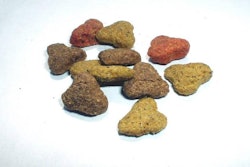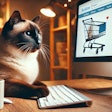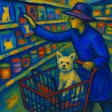Valued at US$15 billion in 2014, nonfood pet supplies are part of a much larger US market for retail pet products and services, totaling almost five times this amount. Yet the competitive allure of the pet supplies segment — which grew by 15% during the five-year 2010-14 period — is as irresistible as ever to retail marketers, according to market research publisher Packaged Facts in the report, “Pet Supplies in the US, 10th Edition.”
More than 2,250 companies of varying sizes compete in the US pet supplies market. This number has grown steadily as more companies have oriented themselves toward the pet and pet supply markets, notes David Sprinkle, research director, Packaged Facts. And the competition will likely continue to ratchet up as the market grows steadily to reach a projected $17 billion in sales by 2019.
In “Pet Supplies in the US, 10th Edition,” Packaged Facts pinpoints four key factors that will influence market growth during the rest of 2015 and beyond. These drivers and macrotrends include:
1. Impact of economy on pet spending: Like most consumers, pet owners adapted to life in the "new normal" economy, and many continue to retain their cautious approach toward spending. While a growing number of pet owners feel as though their financial situation has improved, a much larger constituent is barely maintaining the status quo, while some consumers are still struggling significantly. Yet, while many consumers are still feeling the economic pinch, survey data also reveal that pet owners are increasingly seeing themselves as better off relative to previous years and seem to be increasingly optimistic about their future.
2. Savings still a priority for pet owners: Cost savings are still important for pet products. Roughly half of pet owners feel that they are spending more than they used to on pet products. However, between 2011 and 2015, the percentage of pet owners who feel that pet products are becoming too expensive dropped from 74% to 64%, indicating that a growing number of pet owners may be comfortable revisiting higher priced products. At the same time that some pet owners are less concerned about cost, the vast majority (71%) still agree that they seek out lower prices, special offers, and sales on pet products. Thus while some consumers are becoming more receptive to higher cost items, most still appear to be bargain hunting.
3. Premiumization and natural pet products: For the past decade, premiumization has been driving much of the pet market growth, and this trend remains in strong play. Premiumization especially drives increased sales (at least in dollars if not in units) of high-end pet products, and most industry experts view the trend as critical to maintaining growth and profit as margins on premium pet product lines can be considerably higher than for standard brands. Natural pet products are a key target for premiumization, and consumers continue to look for natural products in the non-food pet products space. Pet health is another key medium for justifying market-supporting higher prices for premium products, and virtually all pet product marketers are focusing more intensively on pet health. Pet owners are willing to spend more if they believe that the products offer health and wellness benefits.
4. Baby boomers are major key to market growth: At around 77 million strong, the generally high-earning and big-spending baby boomers are one of the most important forces driving the pet industry and one that holds enormous promise. To date, boomers have broken the historical pattern of slacking off in pet ownership as they age. Instead, they have superimposed their proclivities toward health/wellness and self-pampering onto their pets. In and of itself, this is very good news for the pet industry and pet markets. But the news gets even better in that boomers are rapidly aging into the senior bracket. If boomers' "rule-breaking" behavior with regard to pet ownership continues, the result will be robust pet market participation in the senior cohort, where pet ownership rates have historically been far below average.
"Pet Supplies in the US, 10th Edition" compiles extensive and proprietary survey data on pet product trends, consumers, and pets, and carefully examines key factors influencing market growth. All pet types are considered, including cats and dogs as well as birds, small animals, fish, and reptiles. The report covers all major nonfood pet product categories including cat litter, rawhide/natural chews, other dog/cat supplies, and non-dog/cat supplies. Within these categories, major segments examined include cat litter, flea and tick care, toys, bedding, grooming, clean-up, and many others.
















